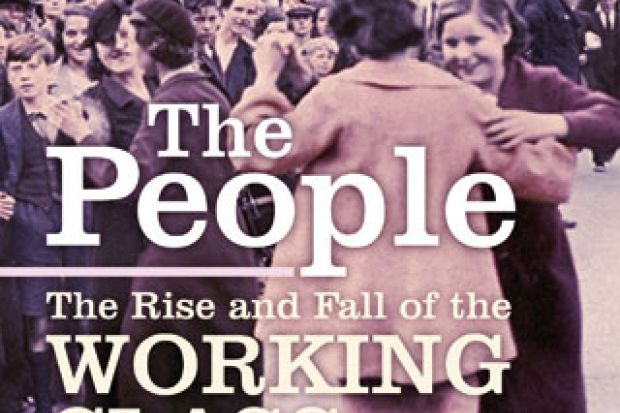At the heart of this book is a surprisingly difficult question: what is (and what was) the working class? Selina Todd oscillates between talking about “the working class”, “ordinary workers” and “the people” in referring to her cast. She also makes a surprising claim: that this story has so far gone untold. The British working class is scarcely an under-studied subject, but in place of examining sociological trends or political expressions of class, Todd wants to expose a more complicated picture, explored through personal experiences as much as possible.
The People surveys the contexts in which the vast majority of the population lived their lives: their well-being and opportunities shaped by government policy, the impact of war and (above all) economic fluctuations. Activism also played a part, as trade unions and community groups campaigned to challenge injustices and secure better working and living conditions. But Todd is interested as much in the individualists as in those committed to collective action. She is particularly strong on discussion of groups that labour organisers at the time, and social historians since, have struggled to categorise within working-class identities, notably domestic servants. The book is also striking for offering an account of being working class that pays at least as much attention to the experience of women as it does to the world of male industrial workforces.
Oral histories are a key source, some recorded for this book and others drawn from archives up and down the country. Todd takes the accounts without discussion or caveats, and puts them to highly effective use. What these personal perspectives reveal so poignantly is the shifting fortunes that constrained so many people’s opportunities, and the anxieties and aspirations that defined different generations. Being “working class” could mean very different things even within an individual’s lifetime. But one of the overwhelming themes that comes across here is vulnerability. Illness, an unexpected pregnancy or allocation of council housing in an area distant from work and friends could all make the difference between a comfortable, even mildly prosperous, existence and a struggle to get by.
These voices offer a far from straightforward celebration of the working class: they express racist sentiments, materialistic preoccupations, unedifying personal relationships. Todd’s provocative response to the sort of virtues romanticised by labour historians is a maverick choice of one life history that runs like a thread through the book. Viv Nicholson, whose husband scooped a fortune on the Pools in 1961, delighted the press with her determination to “Spend, spend, spend”. Her story, based on her memoir, is characterised by selfishness, individualism and shallow consumerism: a world away from community values, self-improvement and aspirations to respectability.
In tracking the fortunes of “the People”, the book’s position is clearly more complex than the subtitle “rise and fall” suggests. Many experienced downward mobility in the 1930s, and again from the 1970s, although experiences diverged considerably between age cohorts and in different sectors of employment, as well as between those who rented (often from the council) and those who bought their own homes. The triumphant years, according to the book’s narrative, were during and after the Second World War, when the working class was identified with the interests of the nation as a whole (“the people”). It is good to be reminded what a commitment to full employment could achieve: from 1948 to the late 1960s, rates of unemployment averaged less than 2 per cent. A combination of jobs, high wage levels and expansions in state welfare provision gave this the makings of a golden age to be working class. Even so, Todd’s life stories identify a rather different periodisation for phenomena such as “affluence”. While it was claimed that people had “never had it so good” by the late 1950s, the benefits came later for much of the population.
Contrary to assumptions about an unstoppable rise of middle-class aspirations and lifestyles, Todd cites a study suggesting that more than 60 per cent of the population in 2013 considered themselves working class: a self-identification fuelled by widespread economic insecurity and incendiary inequalities of wealth. As politicians calculate the value of appealing to “hard-working families”, it seems that many of us think we know what it’s like to “live like common people”. Todd’s polemical and engaging history reminds us of what that experience actually meant, in the distant and not-so-distant past.
The People: The Rise and Fall of the Working Class 1910-2010
By Selina Todd
John Murray, 464pp, £25.00
ISBN 9781848548817
Published 10 April 2014
Register to continue
Why register?
- Registration is free and only takes a moment
- Once registered, you can read 3 articles a month
- Sign up for our newsletter
Subscribe
Or subscribe for unlimited access to:
- Unlimited access to news, views, insights & reviews
- Digital editions
- Digital access to THE’s university and college rankings analysis
Already registered or a current subscriber? Login





